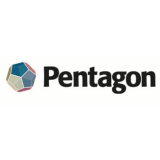This informal CPD article ‘3D Visualisation Beyond Coordination’, was provided by Pentagon Solutions, a leading technology and consultancy partner in the UK & Ireland for companies who strive to gain efficiencies in their business by digitalisation of their assets and processes.
Introduction
Whether you are operating in the construction, manufacturing, or fabrication industry, 3D visualisation has played a major role in engineering for several years. 3D visualisation has allowed organisations and their members to:
- Enhance Design and Innovation - Detailed visualisation concepts can be created, resulting in more innovative and aesthetically pleasing designs.
- Improved Communication - Facilitating clearer communication among team members, stakeholders, and clients by providing a visual representation that is easier to understand than traditional 2D drawings.
- Informed Decision-Making - Aiding in visualising and analysing proposed changes, enabling informed decision-making for the development of any engineering project.
These benefits focus on the design optimisation phases of a project, allowing for improved visualisation centred around coordination. Coordination issues in all engineering disciplines are one of the main factors for delays, over-budgeting, and issues on-site. When thinking of 3D visualisation; coordination will always be the first major issue that engineers think of. However, 3D visualisation is not only limited to coordination and engineering, but also serves as a useful tool for exploring various aspects of an organisation, such as accounts, sales, marketing, and delivery teams.
Installation & Scheduling Sequencing
The utilisation of 3D visualisation involves a comprehensive and strategic process. Once a 3D model has been created in its specialised software it can then be integrated with project-specific data relating to the installation of the component or the system. This integration includes scheduling data, construction timelines, and logistical information to ensure an accurate representation of the project's scope, timeline, and dependencies are captured within the model.
This data about scheduling and construction timeline enables the project teams to plan logistics in an optimised sequence through 3D visualisation. It allows for strategic planning and visualisation of installation, transportation routes, storage areas, and staging points within the model. This comprehensive and detailed approach to 3D visualisation goes beyond mere coordination, making it an essential tool for efficient project management.
Manufacturing for Machine Programming
Developing a visually accurate 3D model offers numerous design benefits. When equipped with the appropriate software, these 3D models can be created using tools identical to those utilised on the shop floor, incorporating Computer Aided Manufacturing (CAM) processes. CAM ensures seamless integration between the 3D model and machine equipment, including:
- Laser Cutting Machines
- Press Machines
- Plastic Moulding Equipment
In the realm of machine programming, 3D visualisation takes a significant stride by illustrating the tool paths machines will traverse during manufacturing. This visual representation empowers engineers to optimise tool movements for efficiency and precision, all while considering material wastage.
Integrating such software into organisational workflows proves highly beneficial, leveraging automation processes to directly translate the 3D model into its physical representation.
Furthermore, 3D visualisation aids innovative prototyping by depicting layer-by-layer additive processes, optimising designs for additive manufacturing technologies like 3D printing. This capability allows for scalable design models to be perfected before transitioning to live manufacturing.














